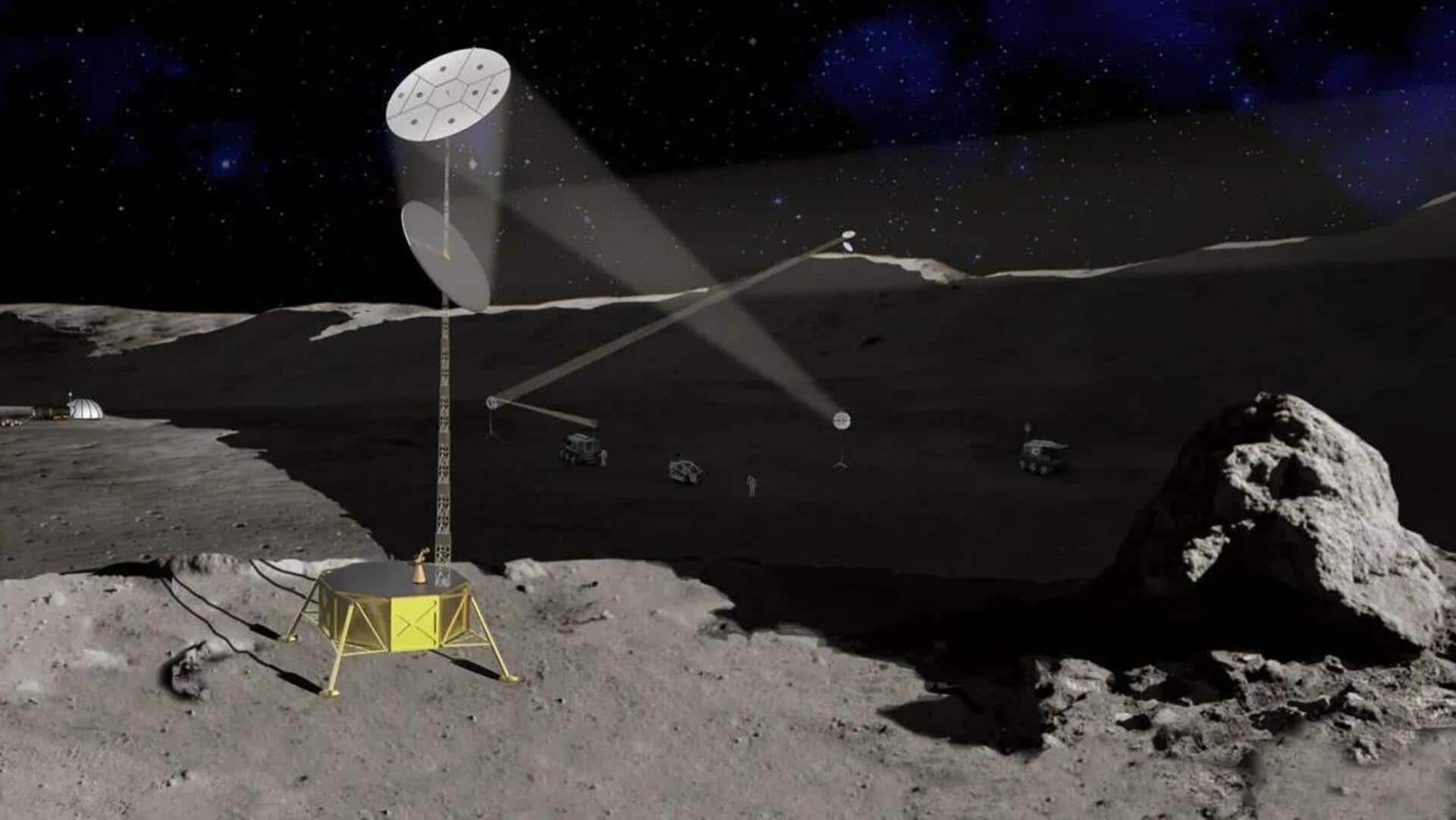
NASA-backed robotics project may illuminate Moon's dark side
What's the story
A part of the Moon never faces the Sun. It is referred to as the permanently shadowed region on the Moon or dark side. This region is believed to hold frozen water. However, conducting observations on the sunlight-devoid lunar region is not without challenges. To learn more about this region, a start-up called Maxar Technologies, along with NASA, is working on a solar-powered system.
Context
Why does this story matter?
It is safe to say that the Moon's dark side has been largely unexplored, perhaps because there have been a couple of technological challenges. However, that is soon about to change. Not just NASA, China and ISRO are also developing missions to get more insights about the side of the Moon that dwells in perpetual darkness.
Mission
Maxar's concept aims at illuminating the Moon's dark side
Maxar's concept, dubbed Light Bender, aims at illuminating the Moon's dark side. Their system works by reflecting incoming sunlight to solar panels positioned in dark regions on the Moon. By doing so, the system would provide solar-powered light over the shadowed regions of the Moon. To set up the proposed solar power system, the company wants to use autonomous robots on the lunar surface.
Information
'It's never been done before'
"We're leveraging investments in autonomy to study how NASA can use robots to assemble and deploy a set of reflectors that keep sunlight focused on a solar panel operating in the shadows," said Sean Dougherty, chief robotics architect at Maxar. "It's never been done before."
Design
A look at the design of Light Bender
The proposed Light Bender will have two 32-foot reflectors, placed at the bottom and top of a 65-foot high pole. The reflector at the bottom will capture sunlight and reflect it to the secondary mirror, which in turn will reflect it to the receiver. These reflectors—spanning the width of a tennis court—will be assembled and deployed autonomously on the Moon's surface by trained robots.
Official words
Light Bender's first demonstration will happen in 2025
Light Bender is currently in the works. Its first demonstration will happen in 2025 if all goes according to plan. It could be crucial in uncovering more about the Moon's dark side, especially finding if it possesses water. Considering several space agencies want to establish a permanent lunar base, finding water would surely be helpful for astronauts venturing to the Moon in the future.